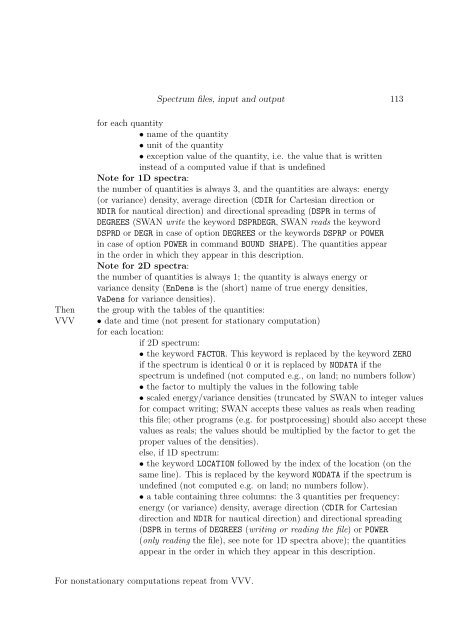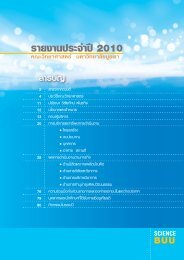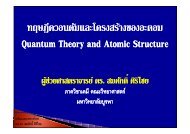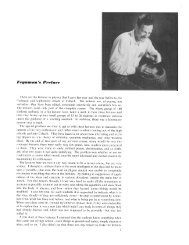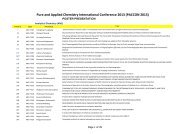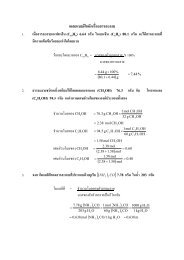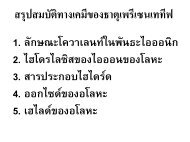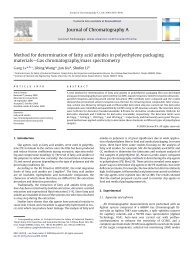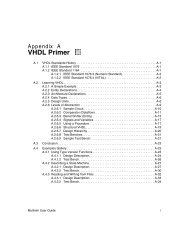USER MANUAL SWAN Cycle III version 40.72A
USER MANUAL SWAN Cycle III version 40.72A
USER MANUAL SWAN Cycle III version 40.72A
Create successful ePaper yourself
Turn your PDF publications into a flip-book with our unique Google optimized e-Paper software.
Spectrum files, input and output 113<br />
Then<br />
VVV<br />
for each quantity<br />
• name of the quantity<br />
• unit of the quantity<br />
• exception value of the quantity, i.e. the value that is written<br />
instead of a computed value if that is undefined<br />
Note for 1D spectra:<br />
the number of quantities is always 3, and the quantities are always: energy<br />
(or variance) density, average direction (CDIR for Cartesian direction or<br />
NDIR for nautical direction) and directional spreading (DSPR in terms of<br />
DEGREES (<strong>SWAN</strong> write the keyword DSPRDEGR, <strong>SWAN</strong> reads the keyword<br />
DSPRD or DEGR in case of option DEGREES or the keywords DSPRP or POWER<br />
in case of option POWER in command BOUND SHAPE). The quantities appear<br />
in the order in which they appear in this description.<br />
Note for 2D spectra:<br />
the number of quantities is always 1; the quantity is always energy or<br />
variance density (EnDens is the (short) name of true energy densities,<br />
VaDens for variance densities).<br />
the group with the tables of the quantities:<br />
• date and time (not present for stationary computation)<br />
for each location:<br />
if 2D spectrum:<br />
• the keyword FACTOR. This keyword is replaced by the keyword ZERO<br />
if the spectrum is identical 0 or it is replaced by NODATA if the<br />
spectrum is undefined (not computed e.g., on land; no numbers follow)<br />
• the factor to multiply the values in the following table<br />
• scaled energy/variance densities (truncated by <strong>SWAN</strong> to integer values<br />
for compact writing; <strong>SWAN</strong> accepts these values as reals when reading<br />
this file; other programs (e.g. for postprocessing) should also accept these<br />
values as reals; the values should be multiplied by the factor to get the<br />
proper values of the densities).<br />
else, if 1D spectrum:<br />
• the keyword LOCATION followed by the index of the location (on the<br />
same line). This is replaced by the keyword NODATA if the spectrum is<br />
undefined (not computed e.g. on land; no numbers follow).<br />
• a table containing three columns: the 3 quantities per frequency:<br />
energy (or variance) density, average direction (CDIR for Cartesian<br />
direction and NDIR for nautical direction) and directional spreading<br />
(DSPR in terms of DEGREES (writing or reading the file) or POWER<br />
(only reading the file), see note for 1D spectra above); the quantities<br />
appear in the order in which they appear in this description.<br />
For nonstationary computations repeat from VVV.


